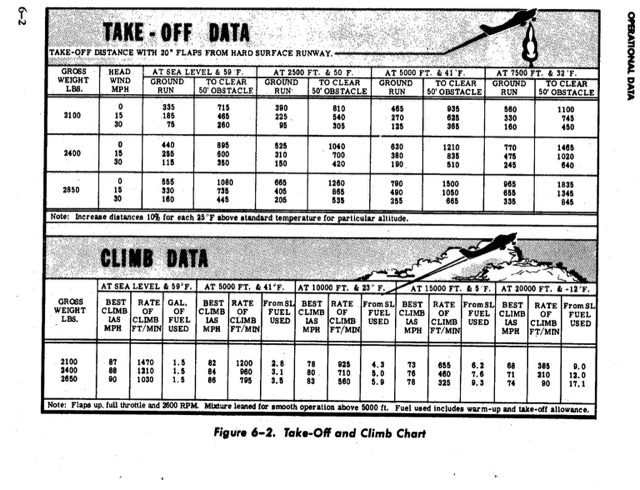I've seen more airplane engines killed due to excessive heat production than midairs, if you want to talk anecdotes.
Yes, but it wasn't anecdotal, I was speaking in hard numbers terms of what real risks are documented to happen the most often during takeoff. Fatal midairs on departure are a "wow!" event. Fatal engine loss of power events are nearly commonplace comparatively.
But the heat thing did leave SoCalFlyer an "out" from his original assertion that his shallow climb was primarily about mid airs, enough so that he has to exercise the "there were other considerations" clause below... Not that those considerations were important enough to mention first in the original post... Heh...
As I stated before, there are other considerations to the faster, shallower climb too, engine cooling being near the top of the list during our recent 105 F days. I prefer the better visibility in my own nontowered Wild West corner of airspace. Our standard pattern entry is left crosswind over the numbers (we're in a little fishmouth cutout of Ontario's Class C) so a very steep climb may blank out that NORDO Aeronca on crosswind. As for engine failure, at 90 KIAS I've got a boatload of extra kinetic energy (as you point out), and less of a forward push to establish best glide than I'd have at Vx or Vy...so maybe a little altitude saved in the transition. I've scouted my airport for possible engine-out landing sites, so if the engine decided to quit at the dreaded 350'-400' AGL, I'll have an extra tool in the toolbox to pick an alternative no more than 90 degrees off my heading. And my aircraft glides at a 12:1 ratio. What is it for a 172, 7:1? And so on. My point is there is no single, cut-and-dried, be-all, end-all answer. Sometimes a mathematical equation can't encompass all the variables. It depends.
Engine failure numbers on GA aircraft are concerning, but look at all the poorly maintained crap out there, despite annual inspections and the best efforts of A&Ps. My personal powerplant is a 70 hr TTSN box-stock Lycoming IO-320-D1A that is religiously maintained...by me. So I like my chances of the prop continuing to turn on the climb-out. So I appreciate your input, but I will continue to...safely...climb to TPA at 90 KIAS.
Summary:
- You want the nose lower in summertime.
- But it's still because of preference, and you still haven't done the math on what the real risk of that "Aeronca" being there are, versus the real risk of a loss of power.
- Engine failure numbers are concerning but new engines don't fail.
- Math might fail if I use the wrong assumptions, so I won't use it to see if one scenario is so far off the scale more common than another that the lesser one almost doesn't matter.

When it comes to takeoffs and aviation discipline, I sometimes understand why the airline guys chuckle at us lowly private pilots. Guess who doesn't launch without a concrete departure plan based not on "preference", but on hard won numerical knowledge of what's going to hurt the most often? The Part 121 folks.
It's not all about the "feels". Preference is great. One has to constantly ask if the preference is based on anything real.
Let's say it's wintertime now. We are back to:
36 seconds of risk of a rare NORDO inside the two degrees of visual coverage you can't see forward who also has to be on a collision course, after a long careful look at it prior to throttle up...
Compared to having a known departure profile and go/no-go point calculated for a safe return to the departure runway (adding whatever margins you like).
I never questioned the shallower climb for any operation that would exceed a known limit of the aircraft like temperature.
I asked if there were any numbers behind the "preference" to see forward vs the known numbers of loss of power accidents on departure.
I've argued the non-rational "feels right" stuff with an instructor who showed the math and his work on takeoffs many years ago, and saw the gross error in the use of emotion over rational numbers. It takes a while for it to sink in.
That your airport is a crosswind entry DID add a little bit of rationality to the decision, but I suspect there's very few NORDOs operating daily there.
Do you know that number? Do you climb at Vy at airports that don't have that as their norm? Do you climb harder in winter? If not, why not?
This is all intended to get people to think about planning takeoffs just like one plans the rest of the flight. It's not personal at all, you just happened to say the correct words to set off my "he might not be planning by real risks" meter.
The meter fell a notch at "crosswind entries" being common. It didn't move lower at all at "temperature", because if temperature was the limiting factor, that limitation only applies for about 1/4 of a year for most of us, peaking at about half a year if one flies in PHX.

